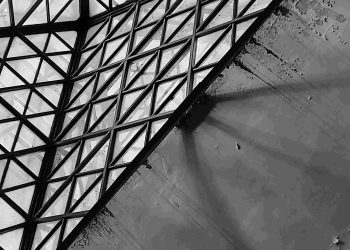Stylish Chic Chaos Designs

Breaking the Mold: The Power of Chaos in Design
The world is awash with order. Clean lines, symmetry, and minimalism have dominated the design conversation for years—until now. Chaos, often misunderstood and undervalued, has emerged as a revolutionary force in creative design. Stylish chaos doesn’t mean an abandonment of structure but rather an embrace of unpredictability. It’s in the juxtaposition of elements, the clash of colors, and the tension between familiar and innovative where truly transformative designs come alive.
A few years ago, I found myself stuck in the constraints of “safe design.” Every client demanded something standard, something in-line with market trends, yet these designs rarely sparked the emotional resonance I craved. One day, I stumbled upon a philosophy class discussing the nature of beauty—how imperfection and asymmetry often radiate authenticity. Inspired, I began incorporating deliberate chaos into my projects, blending irregular forms with bold patterns. The results astonished me: people didn’t just see the designs—they felt them.
From Personal Revelation to Larger Implications
Chaos isn’t just a personal preference; it’s a commentary on the times we live in. In an age dominated by constant information flow and rapid technological advancement, perfection often feels stagnant. Styles like Brutalism and Anti-Design have gained traction precisely because they echo the fragmented, unpredictable nature of modern life.
Philosopher Friedrich Nietzsche once wrote, “One must still have chaos in oneself to be able to give birth to a dancing star.” Chaos, far from being devoid of purpose, can bring about unprecedented creativity when harnessed deliberately. Beyond aesthetics, introducing chaos into design can mirror the multidimensional intricacies of human experience, acting as both a reflection and celebration of our inner complexities.
The Intersection of Chaos, Psychology, and Technology
Modern psychological research supports the idea that introducing uncertainty can heighten engagement. Our brains are wired to pay attention to surprises. This is why noisy, seemingly disorganized websites or unexpected packaging designs can capture attention in oversaturated markets. When technology amplifies this by leveraging algorithms to balance chaos with functionality, the result is groundbreaking—think of AI-generated abstract art or iterative designs in UX.
Meanwhile, in business contexts, chaos is driving workplace evolution. Traditional hierarchies are being replaced with network-based collaboration models, reflecting a more fluid and unpredictable workforce. Similarly, technology, from AR to generative AI, thrives on unpredictable input to learn and evolve.
Practical Ways to Infuse Chaos Into Your Designs
-
Layering Textures:
Combine rough and sleek surfaces to create tactile interest. -
Experimenting with Colors:
Pair clashing colors like neon green with soft pastels to add depth and contrast. -
Breaking Grids:
Intentionally offset layouts to avoid rigid symmetry. -
Asymmetry as a Tool:
Use imbalanced spacing to provoke curiosity and lead the viewer’s eye. -
Unexpected Patterns:
Incorporate irregular visual rhythms to maintain dynamism.
These elements, when applied thoughtfully, can transform your work from merely functional to unforgettable.
Future Trends: Embracing the Unpredictable
The future of design lies in unpredictability. As artificial intelligence and machine learning continue to evolve, designers are learning how to use these tools to generate controlled chaos. Instead of following trends, tomorrow’s creative professionals will use technology to generate highly personalized, dynamic designs that adapt in real-time to their audience’s needs and desires.
Another major trend is the integration of sustainability within chaotic aesthetics. Consumers increasingly demand designs that are not only bold but also environmentally conscious. Repurposing industrial scrap into chic furniture or incorporating recycled materials into avant-garde fashion reflects how chaos can become a force for responsible innovation.
The Call to Action: Your Role in the Chaos Revolution
The key to successfully navigating this movement lies in continuous learning and experimentation. Read widely, explore philosophies outside your comfort zone, and embrace tools like graphic software and AI to unlock new creative horizons. Importantly, challenge conventions. Ask yourself: What happens if you remove the constraints? What if, instead of taming chaos, you amplify it?
Your willingness to step outside traditional frameworks won’t just transform your designs; it will redefine how creativity is perceived across industries. Chaos is not the enemy of order—it is its foundation. And you, as a creator, have the power to shape the future from its edge.










